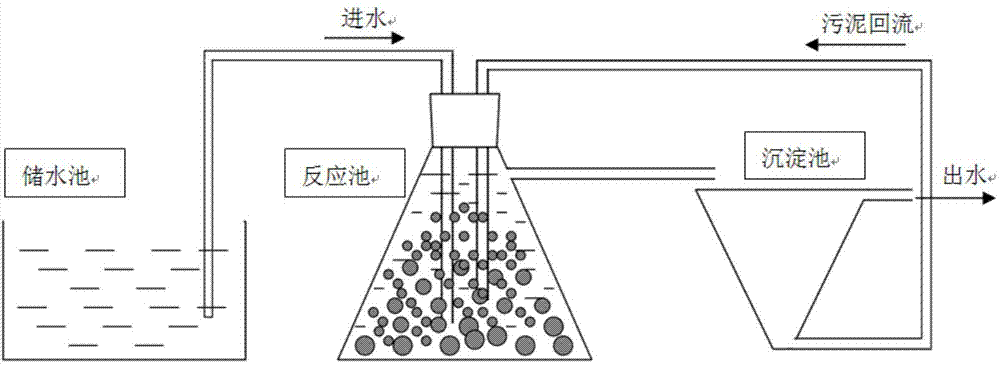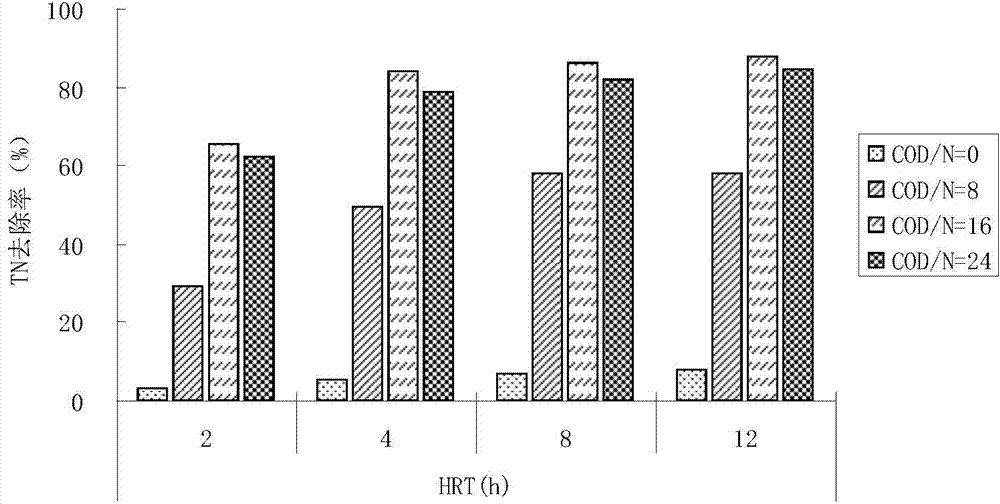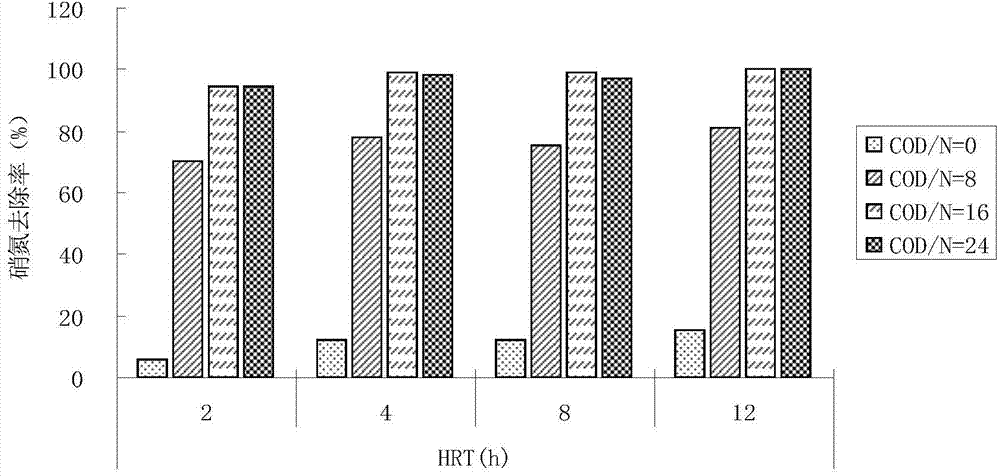Application of potamogeton crispus fermentation liquor to improving capability of denitrification for sewage treatment
A sewage treatment and fermented liquid technology, applied in the field of environmental engineering, can solve the problems that the effluent water quality is easily affected by the external temperature, the release of carbon sources cannot be effectively controlled, and the hydraulic retention time is long. It achieves low cost, simple method, Effect of reducing environmental harm
- Summary
- Abstract
- Description
- Claims
- Application Information
AI Technical Summary
Problems solved by technology
Method used
Image
Examples
Embodiment 1
[0052] Example 1: Preparation of fermented sludge.
[0053] The fermented sludge used in the experiment was taken from the residual sludge after dehydration in the sewage treatment plant.
[0054] Prepare acclimatization medium with the following components: glucose 15g / L, NaNO 3 3.04g / L, KH 2 PO 4 0.44g / L, MgSO 4 ·7H 2 O0.96g / L, CaCl 2 0.72g / L, NaHCO 3 0.96g / L, MnCl 2 0.11g / L. Then put 2.5kg of dehydrated residual sludge from the sewage treatment plant into a 5L fermenter, add 4L of acclimatization medium, adjust the pH to 7.4, acclimate at 28°C for one week, and monitor and control the pH every day.
[0055] The activated sludge in the following examples were all prepared according to the above method.
Embodiment 2
[0056] Embodiment 2: the preparation of fermented liquid of Smilax chinensis.
[0057] The weeds used in the experiment were collected from Tianlai River, Xianlin Campus, Nanjing University. After collection, weed, wash, drain, weigh 1.3kg, crush it with a plant vermicelli machine, put it in a 5L fermenter, add 350ml of domesticated fermentation sludge at the same time, and remove dissolved oxygen after nitrogen aeration for 10 minutes The final ultrapure water 3000ml, adjust the pH to 7-8. The fermenter was placed in a water-proof constant temperature incubator for 7 days of anaerobic fermentation at 37°C. The fermented liquid was filtered to remove the residues of Smilax, and the filtrate was collected and stored at 4°C for later use.
[0058] The Smilax fermented liquid in the following examples was all prepared according to the above-mentioned method.
Embodiment 3
[0059] Embodiment 3: The effect of adding the fermented liquid of Smilax chinensis on the quality of influent water.
[0060] The various water quality indexes of the fermented liquid of Smilax are shown in Table 2, and the quality of influent water prepared with the fermented liquid of Smilax as carbon source is shown in Table 3. Fermentation Broth COD Cr , TN, and TP contents were 15400, 208.6, and 143.7 mg / L respectively. Nitrogen in the fermentation broth mainly existed in the form of ammonia nitrogen, and phosphorus mainly existed in the form of soluble orthophosphate (DIP). Therefore, while increasing the content of organic matter in the influent water by adding the fermented liquid of Smilax chinensis, nitrogen and phosphorus will also be brought in. Compared with the group without fermentation broth, when COD / N=8, 16, and 24, the TN content in the influent increased by 1.3, 2.8, and 4.1 mg / L, and the TP content increased by 0.97, 2.22, and 2.82 mg / L, respectively. Ni...
PUM
 Login to View More
Login to View More Abstract
Description
Claims
Application Information
 Login to View More
Login to View More - R&D
- Intellectual Property
- Life Sciences
- Materials
- Tech Scout
- Unparalleled Data Quality
- Higher Quality Content
- 60% Fewer Hallucinations
Browse by: Latest US Patents, China's latest patents, Technical Efficacy Thesaurus, Application Domain, Technology Topic, Popular Technical Reports.
© 2025 PatSnap. All rights reserved.Legal|Privacy policy|Modern Slavery Act Transparency Statement|Sitemap|About US| Contact US: help@patsnap.com



